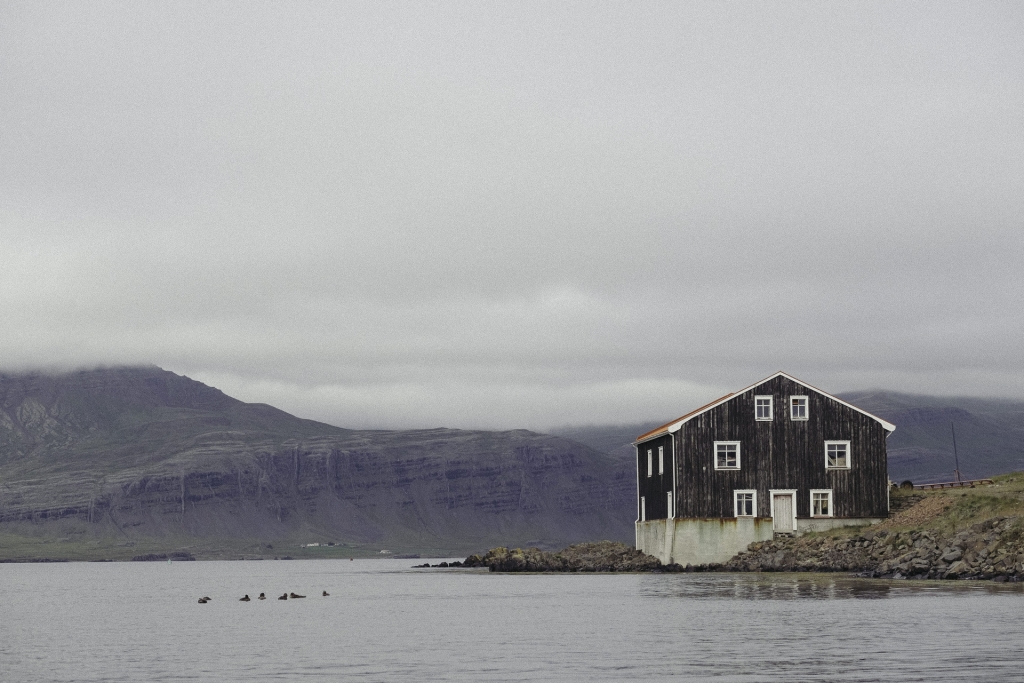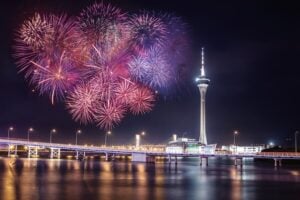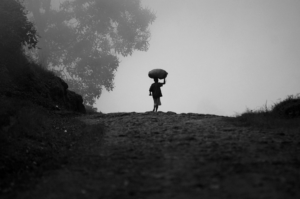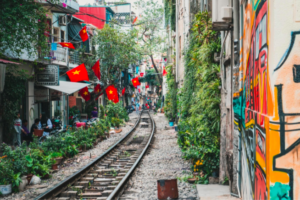A photographer’s guide to Iceland
Iceland is experiencing a boom in tourism, and for good reasons. It surpasses expectations of those in search of nature, beauty and the unanticipated. I recently spent two weeks on an unforgettable road trip of the island.
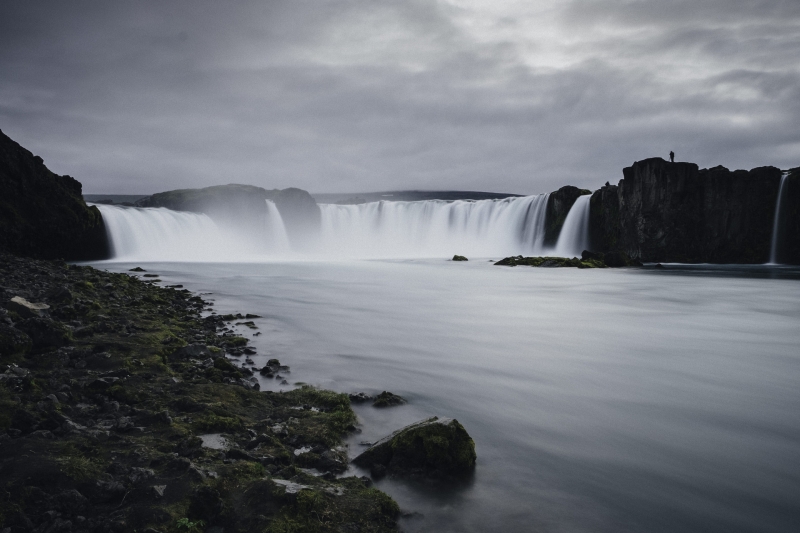
Goðafoss
Although nowhere near being the largest, Goðafoss (“waterfall of the gods”) is easily the most beautiful waterfall in Iceland. The waterfall was named because of its important role in Icelandic history. In the year 1000, lawspeaker Þorgeir Ljósvetningagoði was forced to make a decision that would forever change the fate of Iceland: deciding the country’s religion. After meditating for 24 hours, Þorgeir declared the country to be Christian. The story continues that after the decision was made, he threw his pagan carvings of Norse gods into the waterfall, giving the waterfall its name.
PHOTOGRAPHY TIPS: Goðafoss can be photographed from both sides, offering different perspectives of the waterfall. Use caution if you decide to climb any of the rocks because they are very slippery.
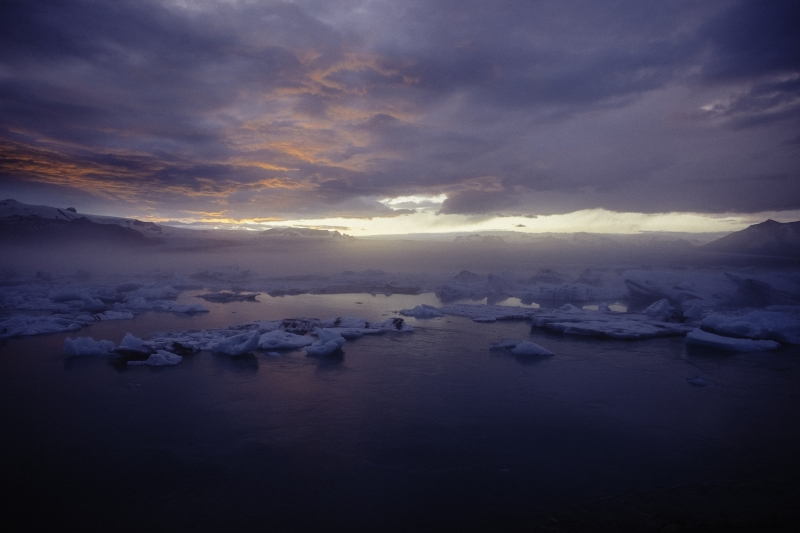
Jökulsárlón
Jökulsárlón glacial lagoon is one of the most visited attractions in Iceland. As the Breiðamerkurjökull glacier recedes, large luminous blue icebergs drift through the lake and slowly towards the Atlantic Ocean, creating a stunning and surreal sight. Once freed from the glacier, the icebergs can spend up to five years bobbing, melting and refreezing in the lagoon, forming an ever-changing panorama. I recommend visiting this icy ‘beach’ on the other side of the road where you can witness hundreds of icebergs being washed up on black sand beaches.
PHOTOGRAPHY TIPS: As with other landscapes, the best time to photograph is either at sunrise or sunset and you’ll be repaid with more interesting light and colors in your photos.
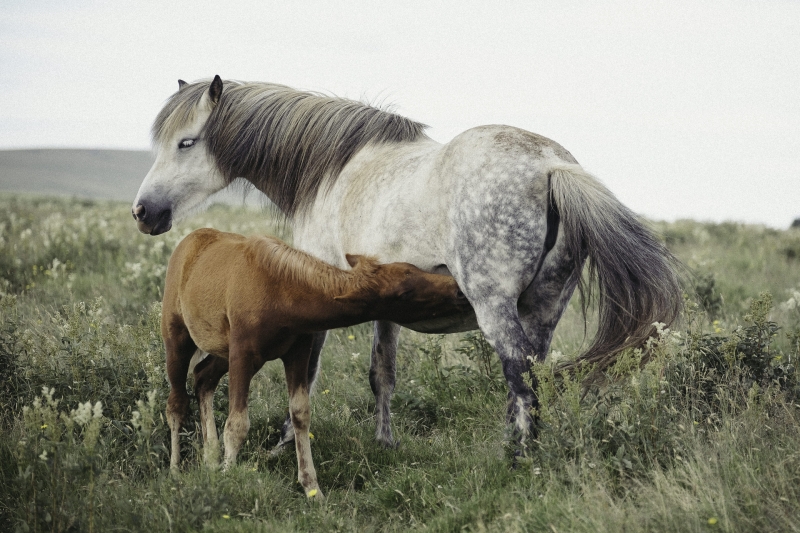
Icelandic horses
“There is no more sagacious animal than the Icelandic horse. He is stopped by neither snow, nor storm, nor impassable roads, nor rocks, glaciers, or anything. He is courageous, sober, and surefooted. He never makes a false step, never shies. If there is a river or fjord to cross (and we shall meet with many) you will see him plunge in at once, just as if he were amphibious, and gain the opposite bank.” — Jules Verne, A Journey into the Center of the Earth Icelandic horses have been purebred in Iceland for more than 1,000 years and can be found all over the country.
PHOTOGRAPHY TIPS: When photographing animals, a good zoom lens comes in extremely handy (I used a 70mm-200mm lens). As with all wildlife photography, be aware of how you approach the animal. Walking up to one too quickly is likely to scare it off. Luckily, Icelandic horses are generally tame, curious and welcoming to strangers, making them a pleasure to photograph.
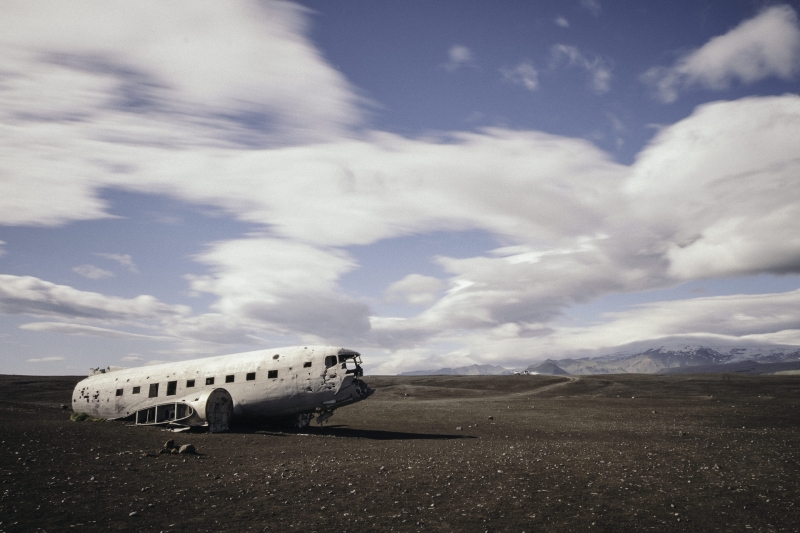
The plane wreck at Sólheimasandur
On November 21, 1973, a US Navy Douglas Super DC-3 airplane was forced to land onto the black sand beach at Sólheimasandur, in the southern part of Iceland. Fortunately, everyone on board survived but the plane was beyond repair and abandoned, leaving behind its eerie weather-beaten shell, and a very unique photo opportunity.
The remains of the plane can be a little difficult to find (they lay around 9km from Skógafoss—a well-known waterfall), and access requires a bumpy drive (or walk) over a barren and vast mountain-lined landscape. Since word got out about the location of the wreck, tourists now flock to the ruins to take photos. Arrive either early in the morning or late in the day to get the best chance of having the twisted metal to yourself.
PHOTOGRAPHY TIPS: When photographing a well-documented landmark, why not try some long exposure photography to give your image a different look to others? Long exposure photography is when the shutter of the camera is open for a long time. This turns anything that moves into a blur (the clouds), yet keeping anything inactive sharp (the plane wreck) and can add a sense of movement to an image. To achieve long exposure photography during daylight hours, a strong ND (neutral density) filter is needed. An ND filter is like a set of sunglasses for your camera, and reduces the amount of light entering the lens, allowing you to make creative photos with slow shutter speeds. A tripod is essential for long exposure photography.
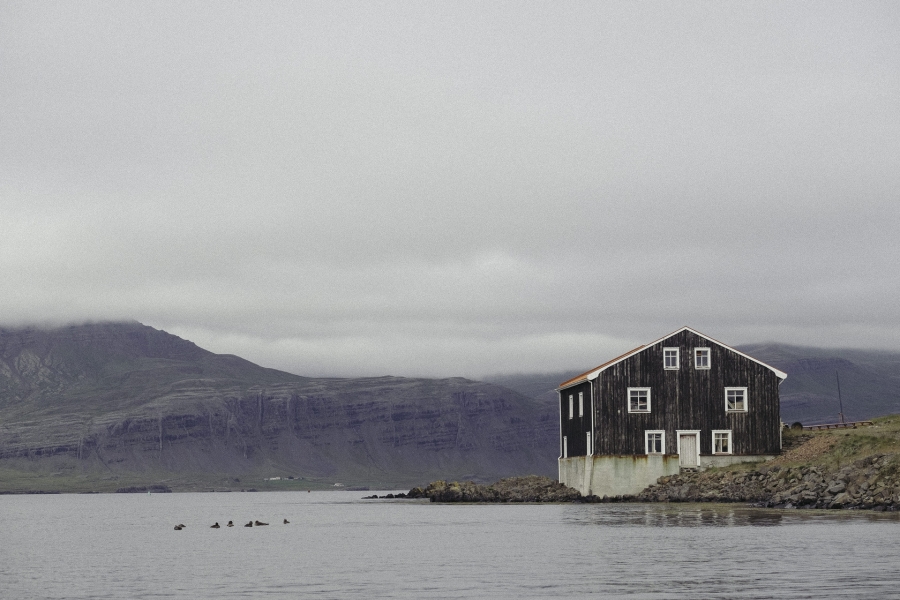
House on lake (Djúpivógur)
Djúpivógur is an often-overlooked small, charming fishing village (population 370) located on a peninsula in eastern Iceland; most people quickly pass through it to catch a boat to a tiny offshore island named Papey where seals and nesting seabirds live. As you enter Djúpivógur, all roads seem to lead to the harbor and a public art display made up of 34 large polished granite eggs, each representing a different local bird. Djúpivógur is a great place to rest and stop for a meal during the beautiful journey along the eastern fjords. It’s difficult to imagine that this peaceful village was once invaded by North African pirates in 1627. The pirates raided farms before heading back to sea with dozens of newly-acquired slaves.
PHOTOGRAPHY TIPS: Cloudy skies reflected in cold water can give photos a monochromatic and moody feel. Look for splashes of color in a subject to make it stand out in the photograph. Also make use of the rule of thirds—in this photo I positioned the house on the lower right third of the image and waited until the flock of ducks occupied the space in the opposite third before taking the photo.
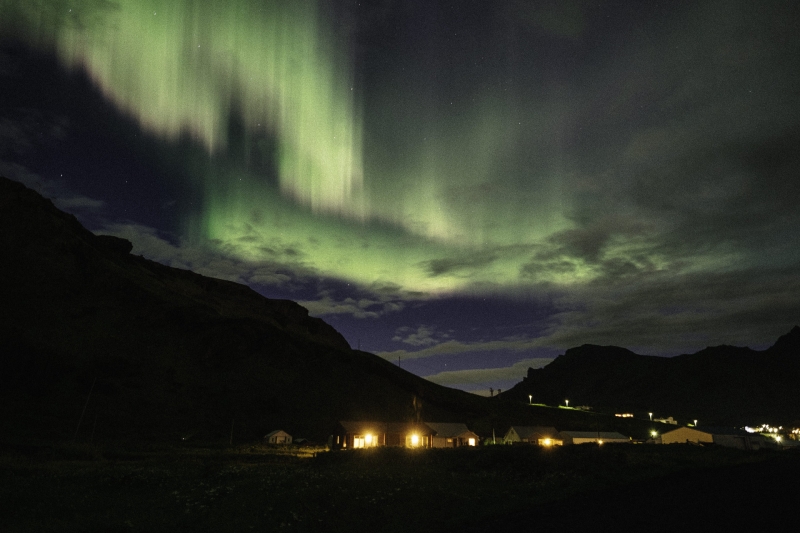
The northern lights: Everywhere (if you’re lucky)
If you are lucky enough to witness the northern lights (also called Aurora Borealis) they may prove to be the most breathtaking part of your Icelandic trip. This spectacular light show can frequently be seen in Iceland from September until March on clear and cold nights. The two contributing factors of seeing the northern lights are the amount of solar activity at the time, and the weather. A clear, cloudless night and a location away from light pollution are your best chances of seeing them. Check out www.en.vedur.is/weather/forecasts/aurora/ for info on solar activity and weather.
PHOTOGRAPHY TIPS: The best way of capturing the northern lights is with long exposure photography. Because there isn’t much light entering the camera (you will be shooting during the night), the shutter will need to keep open for a long time. Other things to consider are to use the widest possible aperture of your lens (lowest ‘f ’ number, for example, f2.8, f1.8 etc.) and also use a high ISO (but be aware that the higher the ISO, the grainier the photo becomes). A tripod is essential when photographing the northern lights. Patience and warm clothes will also make it a more enjoyable experience.
If You Go
- A camper van is a great way to see the island at your own pace. There are many rental companies catering for all needs. Book in advance to get a better deal. 4WD vehicles are needed to access some parts of the country.
- If you are doing a road trip, make sure you always have enough petrol because you can go for stretches without seeing a petrol station.
- The weather in Iceland is incredibly unpredictable. Make sure to check the weather at least once a day. Bring suitable clothing with plenty of layering because it can go from sunny to stormy and back again within a few hours, and being suitably prepared will enhance your experience of the trip.
TEXT AND IMAGES BY DANNY FERNANDEZ

